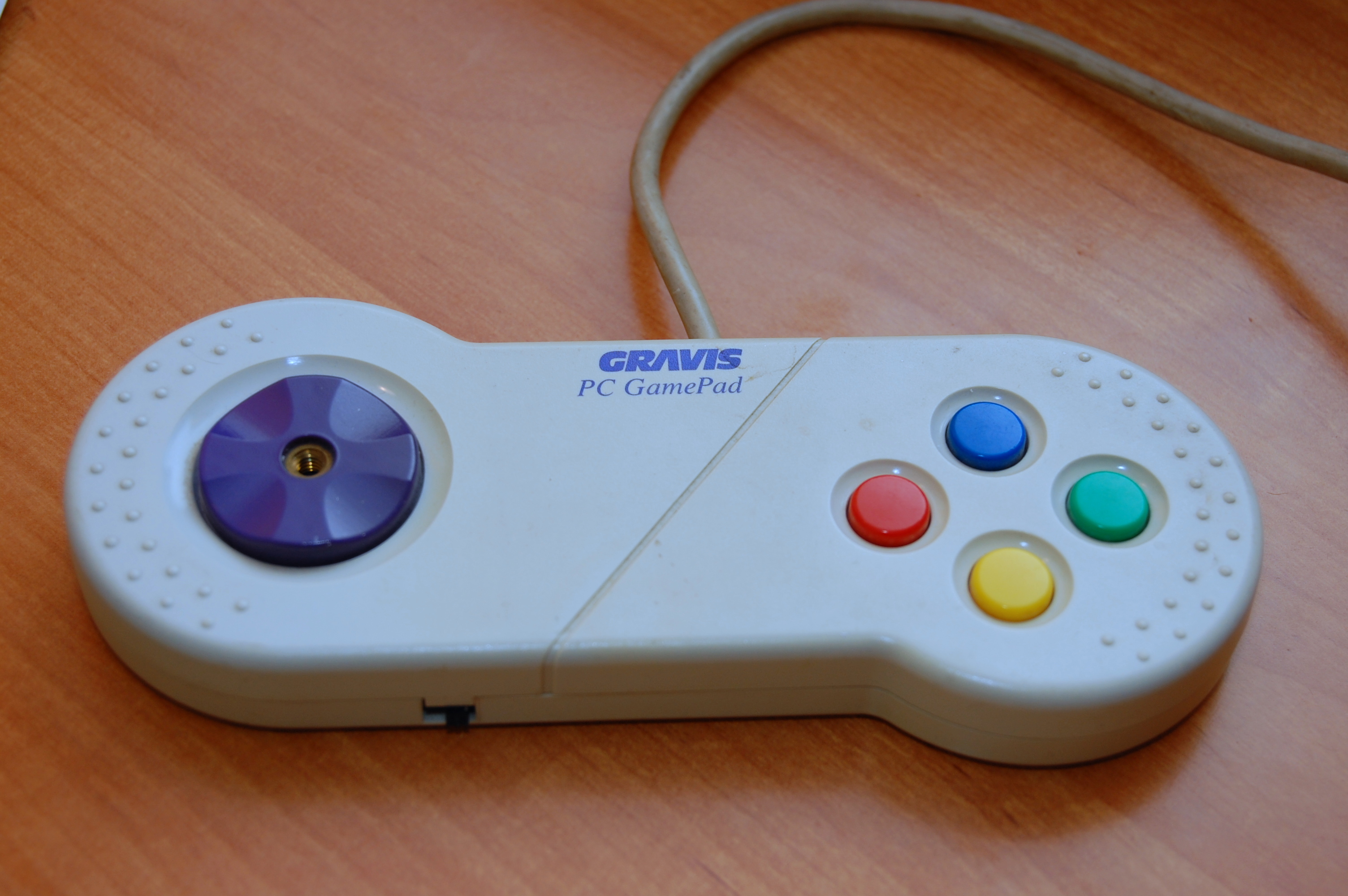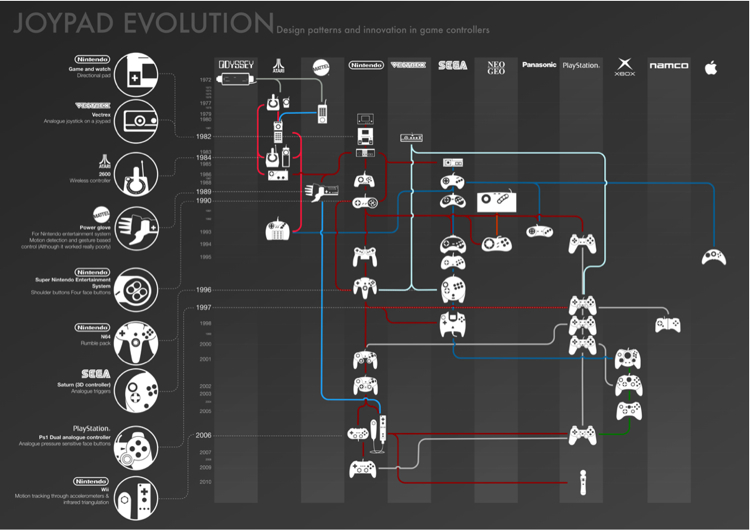The colored lines linking the controllers together in the first pic and the black lines in the second IS the inspiration, with the timelines included on the side. As I said, you have to follow the lines as if you’re following the root to a tree. Do you think it’s a coincidence console controllers have the same letters, with the same color for the letters as the SNES?
Let’s talk about the D-Pad then. Here’s another source:
For a quick TL;DR from that article:
The modern cross shaped D-Pad, engineered by Gunpei Yokoi, originated in 1982 on the Game and Watch version of Nintendo’s Donkey Kong . It immediately proved popular and has seen use on every Nintendo console since. It also continues to see extensive use across non-Nintendo game platforms.
Sources on the shoulder buttons:
https://www.extremetech.com/gaming/156711-evolution-of-video-game-controllers-leading-to-ps4-and-xbox-one/2
TL;DR (page 2):
The SNES popularized shoulder buttons nearly 23 years ago, and they’ve been featured prominently in every major controller afterwards. Instead of relying on your thumbs to do all the work, utilizing other fingers allows for more complex gameplay while maintaining approachability.
TL;DR (SNES insert):
But the Super Nintendo controller really left its mark is by introducing shoulder buttons. Actions like aiming in Super Metroid and chaining combos in Street Fighter 2 became possible, while other games utilized these buttons for camera control or banking left and right.
https://www.brown.edu/Departments/Joukowsky_Institute/courses/13things/7643.html
TL;DR (when they were talking about the Genesis controller):
Next up to the plate was the Sega Genesis. At first, adding only one main button, it wasn’t a huge improvement. Later models added another row of buttons, for a total of six main buttons. The extra three buttons were rarely used. The Sega Genesis was not the star of the fourth generation of game controllers. Rather, that title is reserved for the direct successor to the Nintendo Entertainment System, the Super Nintendo Entertainment System. While adding two main buttons and rounded edges were vast improvements, they were not the biggest improvement. The button configuration may have been the configuration that is essentially still in use today, but the SNES controller had a larger contribution, the shoulder buttons.
The earlier pics I shared aren’t meant to cover every controller in existence, nor was I only referring to MFGRs’ personal designs. I also meant the core features like the D-Pad, shoulder buttons, and the “X, Y, A, B” plus-arrangement layout for any controller on any platform - console, PC, handhelds - all have their roots in Nintendo.
It is the reason why you see every PC controller on the market today share that design - because it is what we grew up with and got adjusted to when Nintendo helped bring the industry back from the crash of '83, way back when computers games still relied solely on a keyboard.


